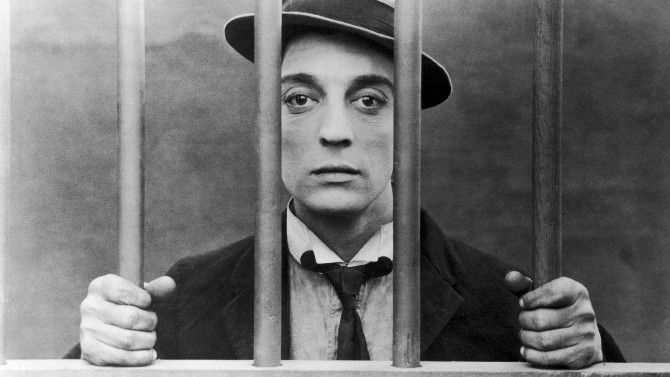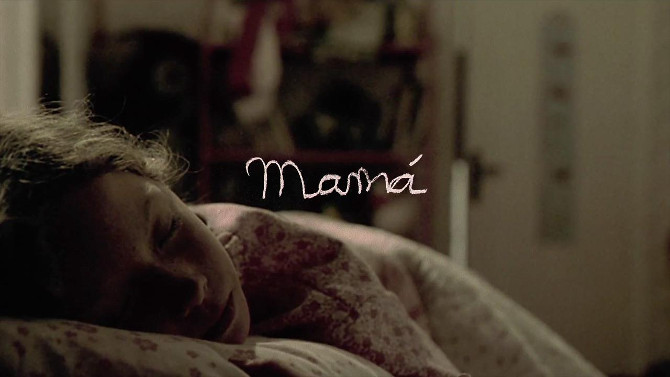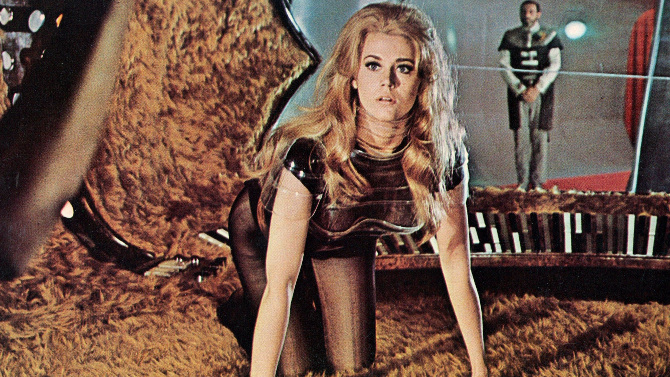
Escape Goat
Will Buster Keaton ever catch a break?. . . well, let’s be honest, by the end of the film, things usually work out alright. But, as The Great Stoneface hops, skips and jumps his way through a bevy of ever complicated (and might I add, intricately plotted) obstacles – no matter what movie, luck never seems to come his way. Case in point, 1921's two reel short, The Goat – which has nothing to do with an animal. Opening with a clever gag in which Keaton, (playing a famished, unlucky man monikered The Goat), is seen heading to the back of a bread line. . . misfortune reveals that the last three men in the procession are not actually men at all – they are mannequins showing off clothing for a store, hence, the never moving lineup.

I Remember Mamá
I love these types of stories. In 2008, Argentinian Andy Muschietti wrote and directed a two minute, thirty five second short film along with his producer sister Barbara, entitled Mamá. Catching the eye of horror maestro Guillermo del Toro, he helped develop an American full length feature (along with producer friend J. Miles Dale – both are now Oscar winners after this past year’s The Shape of Water), which was released in 2013 (a huge success, the flick raked in one hundred, forty six million on just a fifteen million dollar budget). And, just this past year, the siblings ushered in one of the most popular and lucrative horror pictures in some time – It. . . the brother and sister are now pre-producing the much anticipated sequel, slated for a 2019 release. But, it all started with the short. Following two young sisters, Lily (Victoria Harris) and Victoria (Berta Ros), the former wakes the latter from a deep sleep. . . from Lily’s stunned, hapless entrance (never taking her eyes off the open door), we knowing something foul is afoot.

Queen of the Galaxy
Like an episode of Star Trek on Viagra, 1968's Barbarella is an exploitative romp in space, a journey that will take you far past the gaseous crevices of Uranus and into another sci-fi tinged dimension. Written by a pair of era icons (and seven other collaborators), two time Oscar nominee Terry Southern and Roger Vadim (also the director), you will likely never see another movie have an opening credits sequence like this one – a 401st century astronaut, Barbarella (Jane Fonda – Vadim’s wife at the time), slowly removes her spacesuit whilst floating in a gravity-less craft. . . a most sultry, slow-motion striptease (the effect was achieved by having Fonda lie on a large piece of plexiglass with an image of the spaceship underneath her. . . filmed from above, it flawlessly reenacts the semblance of zero gravity).

Dawn of the Deadpool
The anticipation was palpable. . . after a bunch of unique trailers (Superman phone booth spoof, deceased PBS artist Bob Ross riff, ‘oh shit, we forget to put the computer generated effects in’, and apologies to David Beckham), Deadpool has finally returned to theatres – one of the most anticipated R-rated sequels in quite some time. And, for the most part, it thrives. This time directed by stunt man turned action maestro David Leitch (John Wick; Atomic Blonde), he reintroduces us to Wade Wilson, aka Deadpool (Ryan Reynolds), the sarcastic, fast-talking quasi hero who cleans up the streets by leaving one dead body after another littering them. Though all is not well, and we soon flash back to learn why our protagonist is so morose – a nice touch, while he sulks, he plays a music box that features Wolverine impaled on a stake. *** Warning, one major and a few minor spoilers in the upcoming paragraphs.***

They Lost their Bearings
Camping: a dream to some. . . a nightmare to others! For all of the beautiful vistas, calm lakes, and age-old trees that bring you closer to nature, the nights are the pitchest of blacks, hiding not only mosquitos the size of vampire bats (that hover around looking for a scrumptious meal), but also a throng of wild animals that lurk in the shadows – only their glowing eyes seen in the ominous dark. . . and soon, once you’ve meandered off the beaten track, those towering hardwoods all start to look the same. No one can hear you scream when you’re in the middle of nowhere. . . okay, perhaps laying it on a bit thick, but this is the basic premise of the high reaching, low budget 2014 Canadian horror tinged dramatic thriller, Backcountry. Written and directed by first time filmmaker Adam MacDonald, he transports us to a provincial park in northern Ontario during the last days of autumn. The rush is over, people have returned to the big city, but young couple Alex (Jeff Roop) and Jenn (Missy Peregrym) are making the trek to the picturesque natural locale before it closes for the winter. The stomping grounds of Alex for many a summer, it is not high on the to-do list for urban-loving Jenn – a cell-phone addicted lawyer. So confident is Alex that he tells the Park Ranger (Nicholas Campbell) that he does not need a map. . . the employee also informs the camper that the lake he was planning on bringing his gal to is off limits (as kids have been sneaking up there and partying – destroying the pristine, unpolluted loch. . . expect a grand in fines if caught – the horrors of government rules and regulations).

Pork-Chop Suey
One of the great anti-heros of the 1980's, Kurt Russell’s Snake Plissken (John Carpenter’s Escape From New York) is a quick-thinking cynic; a cool, level-headed former Special Forces military man with a plan. . . and let’s face it, his combination of quick wit and eye patch makes him one bad-ass muthafuka. Quite the opposite, Jack Burton (also played by Russell), with his diction having a John Wayne tinge, is a cocky, brash American, a fly-by-the-seat-of-his-pants ‘in his own mind’ leader who lacks the brains, the skills or the know how to be in that all-important position. The main protagonist of John Carpenter’s 1986 fantastical martial arts action/adventure/comedy Big Trouble in Little China, Burton is a truck driver (his big rig named The Pork-Chop Express), spending those long days and even longer nights spouting his unique brand of advice to whoever is listening on their CB – a prime example, “when some wide-eyed, eight-foot-tall maniac grabs your neck, taps the back of your favorite head up against the barroom wall, and he looks you crooked in the eye and he asks if ya paid your dues, you just stare that big sucker right back in the eye, and you remember what ol’ Jack Burton always says at a time like that: ‘Have you paid your dues, Jack?’ ‘Yessir, the check is in the mail’”.
